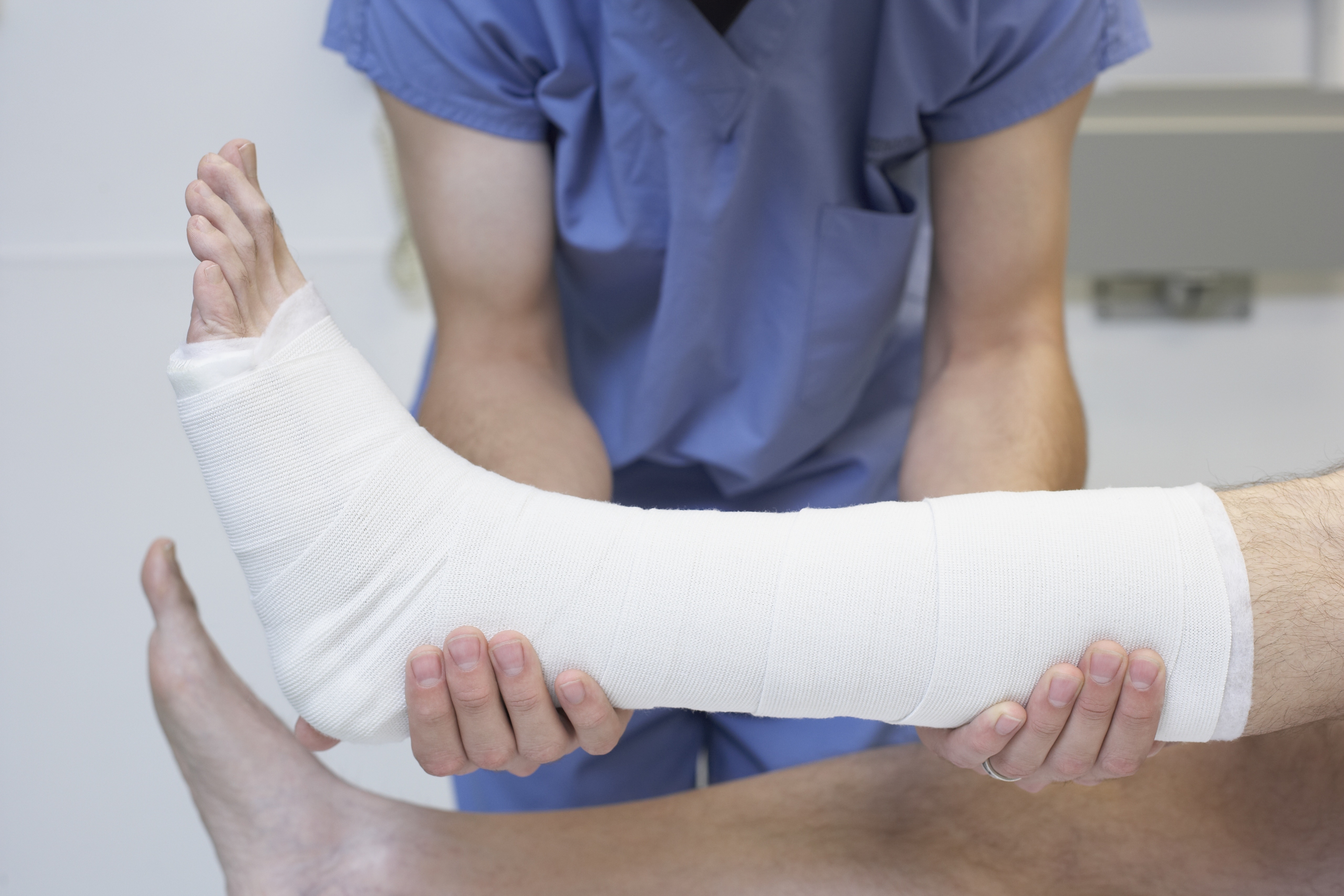To more quickly heal broken bones, UConn Health researchers are exploring the potential combined power of placing gel-encapsulated bone cells inside fractures and using follow-up ultrasound to promote a bone’s healing.
To help UConn Health explore the potentially transformative research idea the National Science Foundation (NSF) has just awarded a $200,000 Early-concept Grant for Exploratory Research (EAGER) to Yusuf M. Khan, Ph.D. of the Department of Orthopedic Surgery and the Institute for Regenerative Engineering at UConn School of Medicine.

When someone breaks a bone orthopedic specialists generally immobilize the fracture with a cast to allow the bone to heal. But the cast doesn’t allow for the broken bone to experience any physical force that has been shown to stimulate bone cells to regenerate the bone and promote a broken bone’s stability and full healing.
But now researchers at UConn Health are looking at a new way to supplement this traditional broken bone care approach to speed a bone’s healing.
Khan believes that adding cells to a fracture site at the earliest stages of fracture repair, and then directing a transdermal physical force to those cells using a low-intensity pulsed ultrasound could accelerate fracture repair and perhaps, in cases where the fracture is unable to heal on its own, provide the necessary stimulus to complete the healing process.
“The new NSF grant will allow us to expand our testing of the gel-encapsulated bone cells in vivo and simultaneously apply and monitor the stimulating effects of ultrasound upon the implanted bone cells to more quickly repair a bone defect,” says Khan.
The ultrasound technology’s sound waves work to provide a low-level physical force, not unlike one that a bone may typically experience during use. It sends soundwaves through the skin to physically shake the implanted cells, while the hydrogel holds them in place as they grow.
Khan and his co-investigator on the grant, Lakshmi Nair, Ph.D., also of the Department of Orthopaedic Surgery and the Institute for Regenerative Engineering, will be further testing the ultrasound’s ability in the laboratory to move and direct the stimulation and growth of bone cells while developing the most optimal hydrogels.
The team’s previous research laboratory explorations in mice, funded by an R21 grant of the National Institutes of Health, demonstrated the successful placement and maintenance of bone-cell-loaded hydrogels, and the ability to control and direct cell behavior based on the mechanical strength of the hydrogel and the magnitude of the applied force. More recently Khan and his team, in collaboration with Professor Bryan Huey of the Department of Materials Science and Engineering at UConn, has been testing the engineering of the bone cell gel to see what specific properties or stiffness may be best to bring about the most robust bone regeneration.
“As we work through the scientific process of bringing this potentially transformative research idea to human clinical trials, the good news is that certain aspects of our research, low-intensity ultrasound technology for instance, is already a readily available tool in the healthcare setting and proven to be safe,” says Khan.
Khan adds: “If the combination of bone-cell-loaded hydrogels and ultrasound therapy are proven to be effective, its healing power could benefit a great deal of patients young and old who experience a broken or defective bone, or are affected by a large scale defects that occur after traumatic injury or tumor resection in the treatment of bone cancer.”



